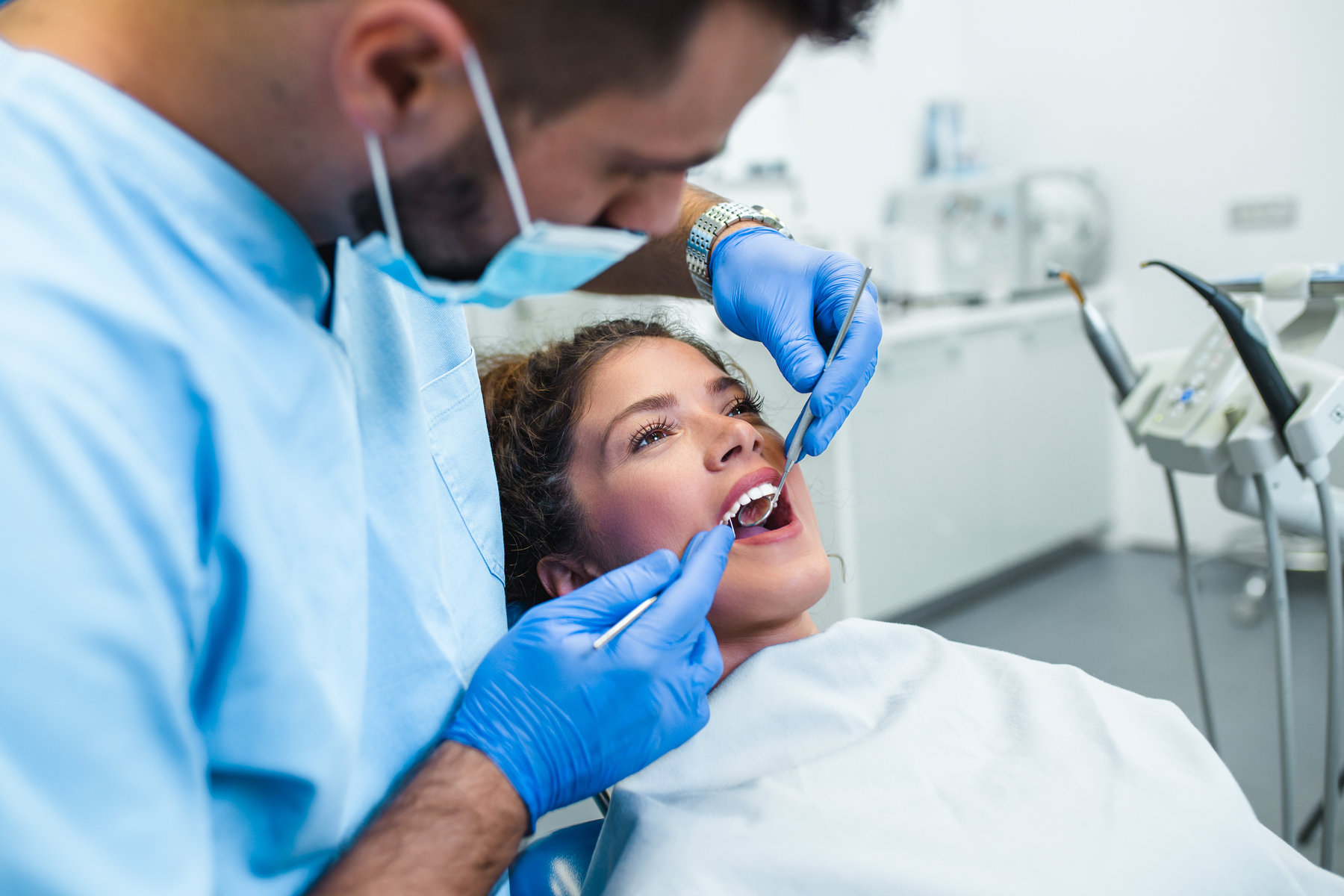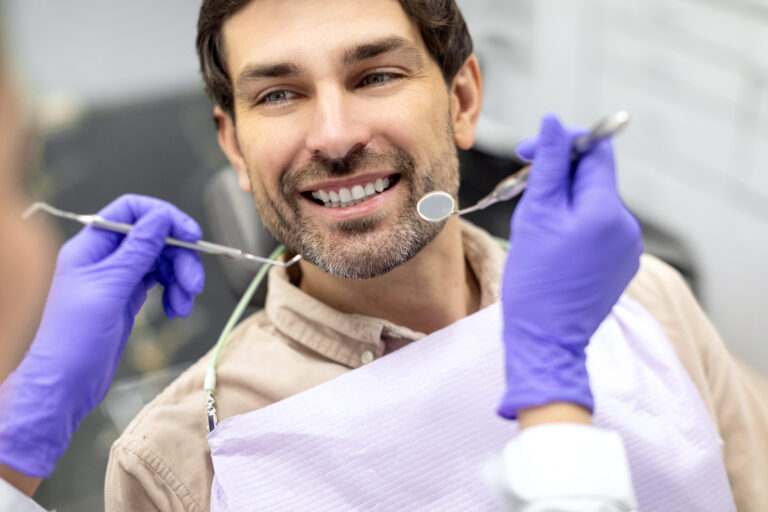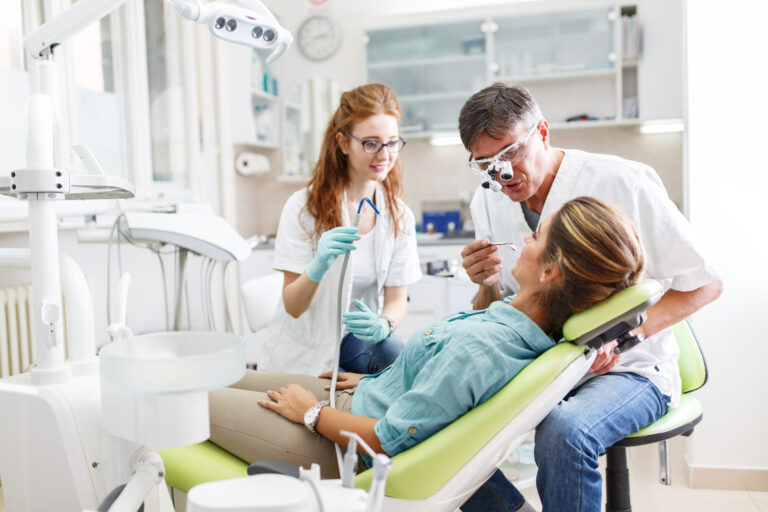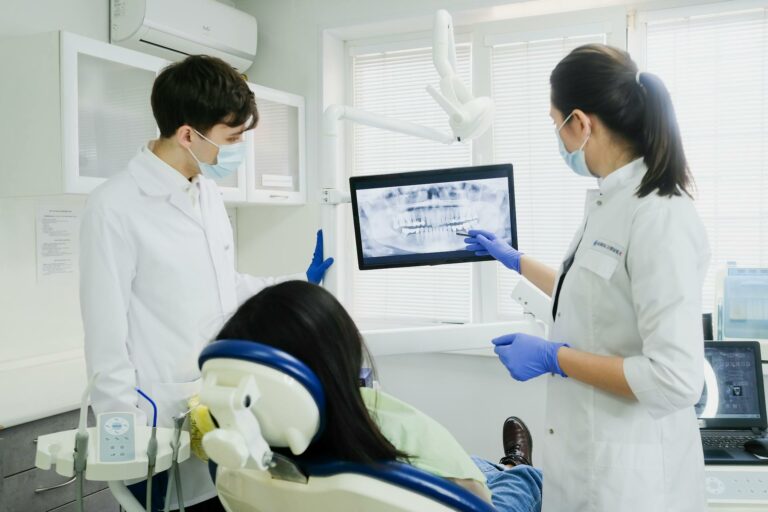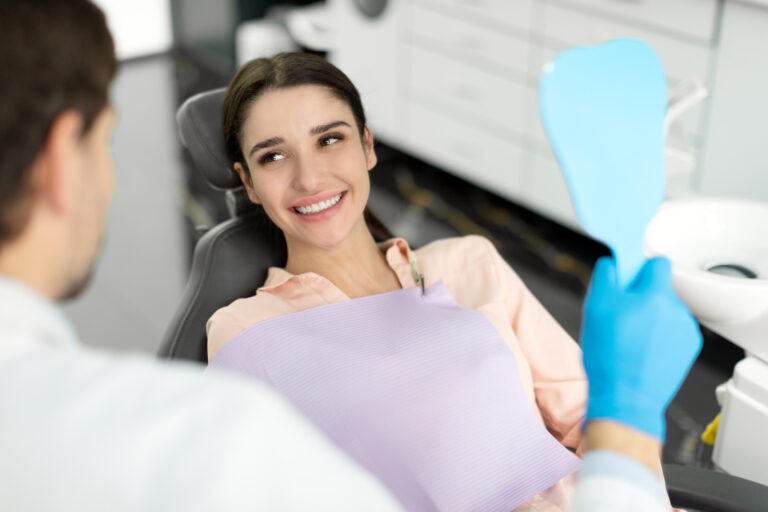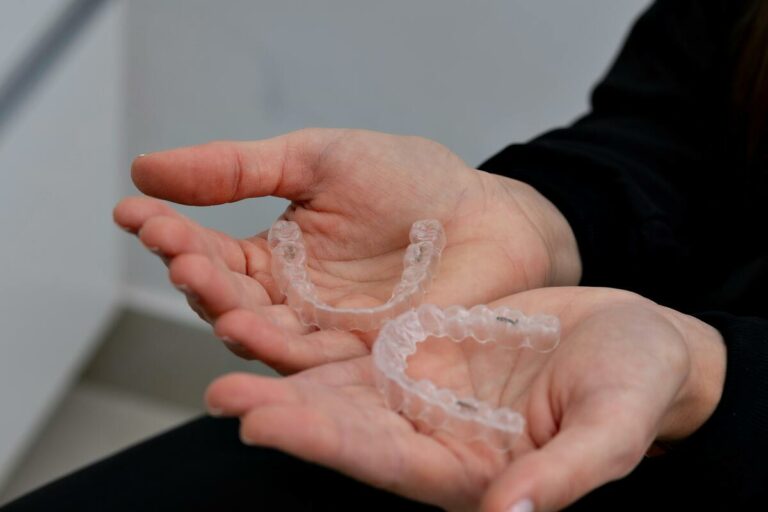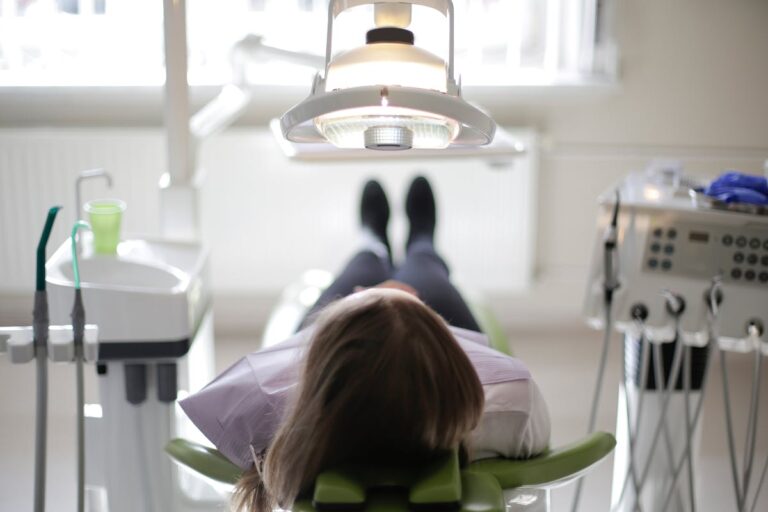Oral Cancer Screening Manhattan: Early Detection That Saves Lives
When you think about protecting your health in Manhattan’s fast-paced environment, oral cancer screening might not top your list. However, this simple, painless procedure could literally save your life. Oral cancer screening involves a quick visual and physical examination of your mouth, throat, and neck areas that takes less than five minutes during a routine dental visit. Manhattan’s world-class dental facilities offer advanced screening technology that dramatically improves early detection rates.
The statistics are sobering yet hopeful: early-stage oral cancer has a five-year survival rate exceeding 80%, while late-stage detection drops survival rates to just 38%. For Manhattan’s busy professionals who often delay preventive healthcare, this screening represents one of the most important five minutes you can invest in your long-term health. With nearly 60,000 oral and oropharyngeal cancer cases projected for 2024, and HPV-related cases rising dramatically, regular screening has never been more critical.
At City Dental Group, we see firsthand how early detection transforms outcomes for our Manhattan patients. The good news? Most dental insurance plans cover oral cancer screening as a preventive service, and the procedure seamlessly integrates into your routine dental checkup.
What Is Oral Cancer Screening and Why Does It Matter?
Oral cancer screening is a non-invasive examination that combines visual inspection and physical palpation to detect early signs of oral cancer or precancerous lesions. During this procedure, your dentist examines your mouth, lips, throat, gums, tongue, cheeks, and neck areas for any abnormalities, unusual textures, or suspicious growths.
The screening matters because timing is everything with oral cancer. When caught early, before it spreads to lymph nodes or other parts of the body, oral cancer responds well to treatment. Localized oral cancer achieves five-year survival rates of over 80%, compared to just 38% for cancers that have metastasized. Early detection also means less invasive treatments that preserve function and quality of life.
How Oral Cancer Screening Works
The screening process begins with a thorough visual inspection. Your dentist uses small lights and mirrors to examine your facial areas, the interior of your mouth, your tongue, and your throat. They’re looking for red or white patches, sores that don’t heal, unusual growths, or changes in tissue texture.
Next comes the physical examination, where your dentist uses gloved hands to gently feel for lumps or unusual textures in your cheeks, tongue, floor of your mouth, jawline, and lymph nodes in your neck. This tactile examination can detect abnormalities that aren’t visible to the naked eye.
The entire process takes less than five minutes and requires no special preparation on your part. You won’t need to fast, take medications, or follow any particular instructions beforehand.
The Life-Saving Benefits of Early Detection
The difference between early and late-stage detection cannot be overstated. Early-stage oral cancer, when still localized to its original site, achieves five-year survival rates exceeding 80%. These cancers typically require less aggressive treatment, often involving surgery alone rather than the combination of surgery, radiation, and chemotherapy needed for advanced cases.
Late-stage diagnosis tells a different story entirely. Advanced oral cancer survival rates drop to approximately 38%, and treatment becomes significantly more complex and invasive. These cases often affect quality of life more severely, impacting speech, swallowing, and facial appearance. Advanced-stage cancers also show recurrence rates of 50-60% compared to 25-30% for early-stage cancers, according to recent studies from the Journal of Oncology.
Advanced Oral Cancer Screening Technology in Manhattan
Manhattan dental practices utilize cutting-edge technology that goes beyond conventional visual examination. These advanced tools significantly improve detection rates and can identify abnormalities that might be missed during traditional screening methods.
VELscope Technology and How It Works
VELscope represents a major advancement in oral cancer screening technology. This device uses fluorescence imaging with blue LED light to make abnormal tissue visible to the naked eye. When the blue light hits healthy oral tissue, it fluoresces bright green due to the natural properties of healthy cells.
Abnormal tissue, including precancerous and cancerous cells, appears darker under VELscope examination because disrupted cellular metabolism and altered collagen structures don’t fluoresce the same way. Studies show that VELscope technology enhances screening sensitivity by over 30% compared to conventional visual examination alone.
The examination takes just 1-2 minutes, requires no rinses or stains, and causes no discomfort. Your dentist simply directs the blue light around your mouth while looking through the device’s optical filter eyepiece.
Other Advanced Screening Methods Available
Beyond VELscope, Manhattan dental practices offer additional advanced screening technologies. ViziLite Plus uses a special rinse followed by bright light examination to highlight abnormal tissue. Some practices also offer oral cytology, where cells are collected for laboratory analysis, and specialized lighting systems that enhance tissue visualization.
These technologies work best in combination with traditional visual and tactile examination, creating a comprehensive screening approach that maximizes early detection potential.
What to Expect During Your Oral Cancer Screening
Understanding what happens during your screening appointment helps reduce anxiety and ensures you’re prepared for the process. The good news is that oral cancer screening requires no special preparation and causes no discomfort.
Preparing for Your Screening Appointment
You don’t need to do anything special before your oral cancer screening. You can eat, drink, and take medications normally. However, it’s helpful to remove any dentures or oral appliances before the examination begins, and try to schedule your appointment when you’re not wearing heavy lipstick or lip gloss.
Your dentist will review your health history, asking about risk factors such as tobacco use, alcohol consumption, family history of cancer, and previous oral health issues. Be honest about your lifestyle habits – this information helps your dentist assess your individual risk level.
During the Examination Process
The visual examination comes first. Your dentist will use bright lights and mirrors to thoroughly examine your face, neck, lips, and the interior of your mouth. They’ll ask you to stick out your tongue, move it from side to side, and open your mouth wide to get clear views of all oral tissues.
Next, they’ll perform the tactile examination, using gloved hands to gently feel your cheeks, tongue, floor of your mouth, and throat areas. They’ll also examine the lymph nodes in your neck and jaw area. If your dentist uses advanced technology like VELscope, this portion adds just a minute or two to the overall process.
Understanding Your Screening Results
Most oral cancer screenings reveal normal, healthy tissue. If your dentist finds anything concerning, they’ll explain what they’ve observed and discuss next steps. Not all abnormalities indicate cancer – many turn out to be benign conditions, infections, or irritation from dental work or injury.
If follow-up is needed, your dentist might recommend monitoring the area for changes over time or refer you to an oral pathologist for further evaluation. A biopsy, where a small tissue sample is removed for laboratory analysis, provides definitive diagnosis when necessary.
HPV and Oral Cancer Risk: What Manhattan Residents Should Know
Human papillomavirus (HPV) has emerged as a significant risk factor for oral and oropharyngeal cancers, particularly affecting the back of the tongue, tonsils, and throat areas. This trend has important implications for Manhattan residents, regardless of traditional risk factors like tobacco and alcohol use.
Rising HPV-Related Oral Cancer Rates
HPV-related oral cancer cases have increased dramatically over the past two decades. Approximately 37,800 of the nearly 60,000 oral and oropharyngeal cancer cases projected for 2024 will be HPV-related, according to the Centers for Disease Control and Prevention. About 70% of newly diagnosed oropharyngeal cancers test positive for HPV.
HPV-positive oropharyngeal cancer has increased three-fold between 2000-2017 and now exceeds cervical cancer as the most common HPV-related cancer. While these cancers occur more frequently in men, women are not immune, and the demographics are shifting to include younger patients who don’t fit traditional risk profiles.
Risk Factors for Manhattan Professionals
Manhattan’s diverse, educated population includes many individuals who don’t consider themselves at high risk for oral cancer. However, HPV-related oral cancers often develop in people without traditional risk factors like tobacco or heavy alcohol use. The virus spreads through intimate contact, and many people carry HPV without knowing it.
At City Dental Group, we emphasize that HPV-related oral cancer can affect anyone, regardless of lifestyle choices. This makes regular screening even more important for Manhattan residents who might otherwise skip preventive healthcare due to busy schedules or perceived low risk.
Oral Cancer Screening Cost and Insurance Coverage in Manhattan
Cost shouldn’t prevent you from getting regular oral cancer screening, especially given the life-saving potential of early detection. Most insurance plans recognize oral cancer screening as essential preventive care.
Insurance Coverage for Preventive Screening
Many dental insurance plans, including major carriers like Cigna, cover oral cancer screening as a preventive service at 100% after your copay when performed during routine dental visits. This coverage recognizes that early detection saves both lives and healthcare costs long-term.
ManhattanLife dental plans, popular among NYC residents, typically include preventive services like oral cancer screening in their coverage. These plans range from $1,000 to $5,000 annual maximums, with premiums starting around $30 monthly. The investment in preventive coverage pays dividends when you consider the alternative costs of treating advanced-stage cancer.
Out-of-Pocket Costs and Payment Options
For patients without dental insurance, oral cancer screening costs vary depending on the technology used and the complexity of the examination. Basic visual and tactile screening typically costs between $50-150, while advanced technology screening with VELscope or similar devices may range from $100-300.
Many Manhattan dental practices offer payment plans or financing options for uninsured patients. Some also provide package deals that include oral cancer screening with routine cleanings and examinations, making comprehensive preventive care more affordable.
Common Questions About Oral Cancer Screening in Manhattan
How Often Should I Get Screened for Oral Cancer?
Dental professionals recommend oral cancer screening at least once or twice per year during routine dental checkups. This frequency provides the best opportunity for early detection when cancer is most treatable. Higher-risk patients – those with tobacco use, heavy alcohol consumption, HPV infection, or family history of oral cancer – may benefit from more frequent screening.
The key is consistency. Regular screening allows your dentist to establish a baseline of your normal oral tissues and quickly identify any changes that develop over time.
Is Oral Cancer Screening Painful or Uncomfortable?
Oral cancer screening is completely painless and causes minimal discomfort. The visual examination involves bright lights and mirrors, similar to any dental checkup. The tactile examination involves gentle pressure as your dentist feels for abnormalities, but this shouldn’t cause pain.
Advanced technology like VELscope adds no discomfort – you simply keep your mouth open while blue light illuminates your oral tissues. The entire process takes less time than a typical dental cleaning.
Can Oral Cancer Screening Detect All Types of Oral Cancer?
While oral cancer screening is highly effective, no screening method detects 100% of cancers. However, comprehensive screening that combines visual examination, tactile assessment, and advanced technology like VELscope significantly improves detection rates.
Some cancers develop in hard-to-see areas or mimic benign conditions in their early stages. This is why regular screening is so important – it creates multiple opportunities to catch developing cancers and increases the likelihood of early detection.
Protect Your Health with Professional Oral Cancer Screening
Oral cancer screening represents one of the most important investments you can make in your long-term health. With survival rates dramatically higher for early-stage detection and advanced screening technology readily available in Manhattan, there’s no reason to delay this potentially life-saving procedure. Regular screening, combined with awareness of changing risk factors like HPV, gives you the best chance of catching oral cancer when it’s most treatable.
At Oracare Dental Centre, our experienced team utilizes the latest screening technology to provide comprehensive oral cancer detection for Manhattan residents. We understand the demands of city life and work to make preventive care convenient and accessible. Don’t let a busy schedule compromise your health – oral cancer screening takes just minutes but could save your life. Contact us today or schedule your screening appointment online to take this crucial step in protecting your health.
